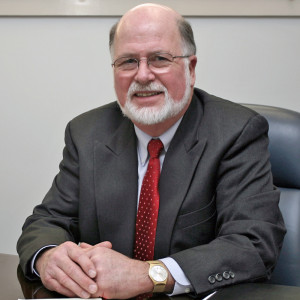Portsmouth is home to Pease International Tradeport, a prospering community covering 3,000 acres of world-class office and industrial space. It’s home to over 250 companies employing more than 9,525 people, occupying some 4 million square feet of business space. The facilities are managed by the Pease Development Authority and for this installment of 5 Questions, we interviewed David Mullen, executive director of the PDA.
Mullen began his career at the PDA nearly 20 years ago as its director of marketing and later served as deputy director. He also did three turns as an interim executive director after the departures of previous directors George Meyer, George Bald and Dick Green. The third time was the charm for Mullen – he officially had the interim tag struck from his title and has served as executive director since March 2009.
1. The Pease Development Authority will soon be celebrating 25 years of operation, since it closed as an Air Force Base in 1991. What are the secrets to PDA becoming the most successful military-to-civilian conversion in the country?
The 25th anniversary of the formation of the Pease Development Authority was June 1, 2015. The success of Pease is greatly due to the real estate adage “location, location, location,” and the resulting supply/demand for real estate in this location.
Portsmouth is one of the jewels of the state and the rate of job growth in Portsmouth proper (71 percent) is more than twice that of the state (31 percent). Having been a state industrial rep from 1990 to 1998 taught me that company executives prefer to live and work within a 15-minute commute from Pease. The area provides many diverse housing opportunities, from ocean front to farmland or the city of Portsmouth itself.
Another major advantage to locating at Pease is the benefit of having easy access to a highly skilled and available three-state workforce. The demographic reach within a 45-minute commute is huge, with the ability to attract workers from as far north as Portland, as far south as Boston and as far west as Manchester, Concord and the Lakes Region.
2. PDA started off with just the airport, but has expanded considerably over the years. Can you summarize the different facilities that are now part of PDA?
The original Public Benefit Transfer to the state from the Air Force was 3,000 acres and included the airport, the golf course and the land, which is now the office and industrial park. In 2001, the New Hampshire Legislature gave the PDA oversight control of the Port of New Hampshire, which includes the main deep water terminal at Market Street; the Portsmouth Fish Pier; Rye Harbor, and Hampton Harbor. In 2008, the Legislature also gave PDA control over Skyhaven Airport in Rochester, a small general aviation airport with approximately 80 private aircraft.
3. PDA’s mission states up front that it exists to “initiate economic opportunity.” What does PDA do on a day-to-day basis to fulfill that mission?
The mission of the PDA was/is to create a diverse economic engine for the region/state and to utilize the resources of land and existing buildings to create the greatest number of high paying jobs possible. Today, Pease is home to 250+ companies who employ 9,540 people and occupy over 4.3 million square feet of office and industrial space. The total current annual payroll is in excess of $600 million a year.
The PDA day-to-day role is to continue to manage and develop the remaining available land and buildings as well as maintain airport operations and continue the expansion of commercial airline service. Currently Allegiant Airlines offers scheduled flights to Florida destinations and expects to increase the frequency of weekly flights and add new destinations over the next several years.
4. How do you communicate the New Hampshire Advantage to business looking to expand or relocate to the Granite State?
Back in 1990 when I first started working for the Department of Resources and Economic Development, there was no sales pitch for a company considering moving to New Hampshire. David Rines and I were the two state industrial representatives and we decided that we needed to demonstrate “It’s not what we give you to move to New Hampshire. Rather, it’s what we don’t charge you once you’re here, and that is the New Hampshire Advantage.” Dave and I created the State-to-State Comparisons to illustrate that you get to keep more of what you make in New Hampshire. I still continue to use State-to-State Comparisons today.
5. What’s coming up next for PDA?
The Pease International Tradeport and the PDA have come a long way in 25 years but there is still more to do on all fronts. The PDA will continue to promote development of the remaining 60+/-acres of the Pease International office/industrial park. It is estimated another 1,500,000 to 1,750,000 square feet of building space and a total of 11,000 direct jobs could be developed on the non airport land and 120 acres of airport land would be available for aviation use expansion and related development.
With respect to Skyhaven Airport, the 4,000-foot runway re-paving and installation of an approach lights system was just completed. Apron re-design, proper drainage installation, and paving is planned over the next several years. Finally, repairs to existing hangars will occur over time as warranted.
Maintenance and improvements to the Port of New Hampshire will continue, including possibly extending the main pier to accommodate larger ships as well as pier deck resurfacing. A Tiger Grant application is in process of being submitted to finance this multi-million dollar improvement plan.










